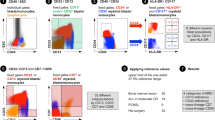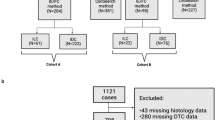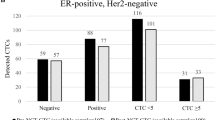Abstract
The effect of tamoxifen upon cellular DNA ploidy in carcinoma of the breast was assessed by flow cytometry (FCM), in a prospective group of 77 patients with primary operable disease. Each had a needle biopsy at the outpatient visit for diagnosis and FCM analysis, and definitive surgery was performed a median of 8 days later. Forty received tamoxifen during this period - 40 mg qds loading dose for 24 h, followed by 20 mg daily until the day of operation: 37 patients received no therapy. The DNA histogram from the needle biopsy was compared with that obtained from the resected tumour for each individual. There was little change between the pair of histograms from tumours from the untreated patients. In those who had received tamoxifen the most consistent effect was a marked reduction in the magnitude of the 'tetraploid' peak in tetraploid or near-tetraploid tumours with DNA indices 1.8-2.0. There was little change in diploid or 'other DNA-aneuploid' tumours. In tetraploid tumours (DNA index of 2.0) the percentage of nuclei in the diploid S phase was significantly related to the percentage of nuclei in the diploid G2 + M/tetraploid G1 peak (P less than 0.003, unpaired t test). These data suggest that an effect of tamoxifen can be demonstrated by FCM upon tumours exhibiting a tetraploid or near-tetraploid DNA content. It is possible that tetraploid or near-tetraploid human mammary tumours may be a distinct group of endocrine responsive tumours within the overall group of aneuploid tumours, and that the majority are probably derived from the diploid population rather than being a true aneuploid population.
This is a preview of subscription content, access via your institution
Access options
Subscribe to this journal
Receive 24 print issues and online access
$259.00 per year
only $10.79 per issue
Buy this article
- Purchase on Springer Link
- Instant access to full article PDF
Prices may be subject to local taxes which are calculated during checkout
Similar content being viewed by others
Rights and permissions
About this article
Cite this article
Baildam, A., Zaloudik, J., Howell, A. et al. Effect of tamoxifen upon cell DNA analysis by flow cytometry in primary carcinoma of the breast. Br J Cancer 55, 561–566 (1987). https://doi.org/10.1038/bjc.1987.114
Issue Date:
DOI: https://doi.org/10.1038/bjc.1987.114



